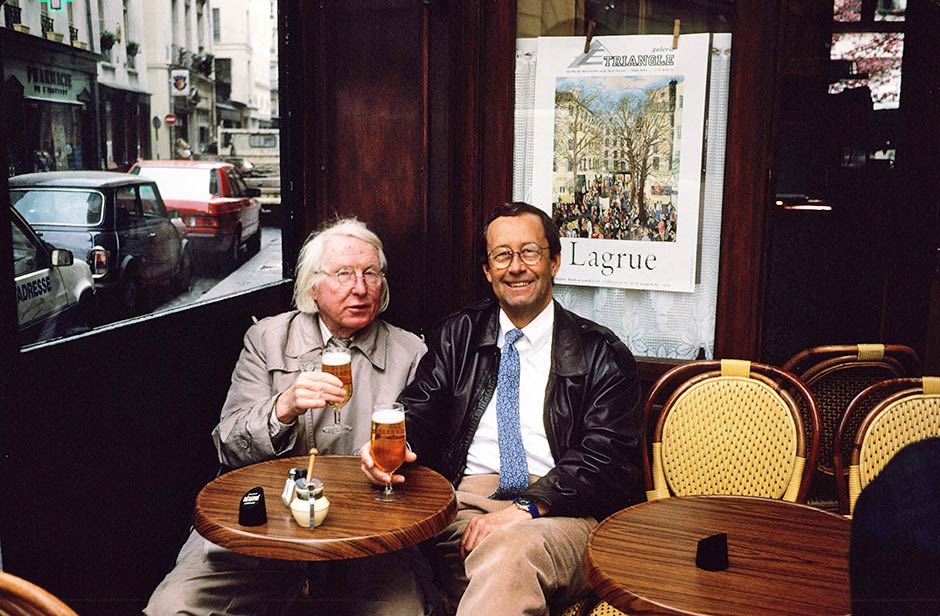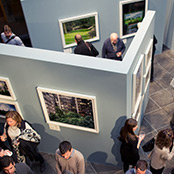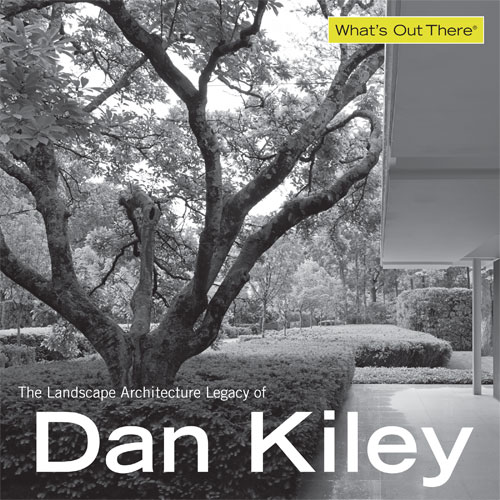Recollections
Jack Smith, Arch. D., FAIA, NCARB, 2013
 Only rarely in history does a genius in the arts, as in other fields, emerge. Dan Kiley was such a genius. It was in Salt Lake City in the winter of 1965 when I first met Dan. I was teaching half time at the University of Utah. I was teaching entirely on the faith that our Dean, Robert Bliss, had in me since at the time I had no credentials at all except some undergraduate work and a passion for architecture. Dan Kiley came to our school and gave one of his inspiring lectures on landscape architecture. He sounded like a Buddhist when he spoke about the land and our human tracery in it.
Only rarely in history does a genius in the arts, as in other fields, emerge. Dan Kiley was such a genius. It was in Salt Lake City in the winter of 1965 when I first met Dan. I was teaching half time at the University of Utah. I was teaching entirely on the faith that our Dean, Robert Bliss, had in me since at the time I had no credentials at all except some undergraduate work and a passion for architecture. Dan Kiley came to our school and gave one of his inspiring lectures on landscape architecture. He sounded like a Buddhist when he spoke about the land and our human tracery in it.
Being an avid skier I had been asked by Ted Johnson, a fellow skier, to begin some preliminary design work on what would become Snowbird, a major resort in the Wasatch Mountains near Alta, Utah. Being under qualified at the time to take on a major commission, I asked Dan if he was a skier in hope that he might give me some guidance. He said “Yes indeed I am a skier and I brought my skis with me from Vermont.” We skied together at Alta that weekend and looked at the site which would become Snowbird. That first trip was the beginning of a professional and close personal relationship that lasted until Dan’s death in 2004.
On Dan’s suggestion I formed “The Snowbird Design Group” with Robert Bliss and Brixen and Christopher, Architects, for whom I was working at the time. Dan Kiley was our consultant. Subsequent reconnaissance trips provided the base information for the initial planning and design of a major ski resort. Although Dan’s involvement in the design of Snowbird did not continue throughout its design development and construction, his first thoughts proved to be most significant. We were initially planning the village to be on the south side of a river where there was very limited land and no ski run out due to the steepness of the terrain. Dan suggested a skier’s bridge over the river which would lead to a plaza connecting all of the buildings and allow for a gentle run out at the base of the mountain. This was the diagram that was followed in our final designs. Dan said to me on many occasions, “Jack, if the diagram is wrong everything will be wrong.” Indeed Dan’s diagrams were always right. He came at every problem from an oblique and unique view. We at his office were always amazed at his foresight and imagination. During the five years it took from the initial designs to the funding of Snowbird, I was invited to join Dan in Vermont. I became an associate in 1967 and a partner in 1968. I returned to Utah to complete the planning and construction of Snowbird and to begin my own practice, ENTELEKI, in 1970-71. Dan’s influence on my own philosophy of design and life continues to this day. We traveled the world together literally and intellectually. I owe a deep debt of gratitude to this most inspiring of men.
More Recollections...




